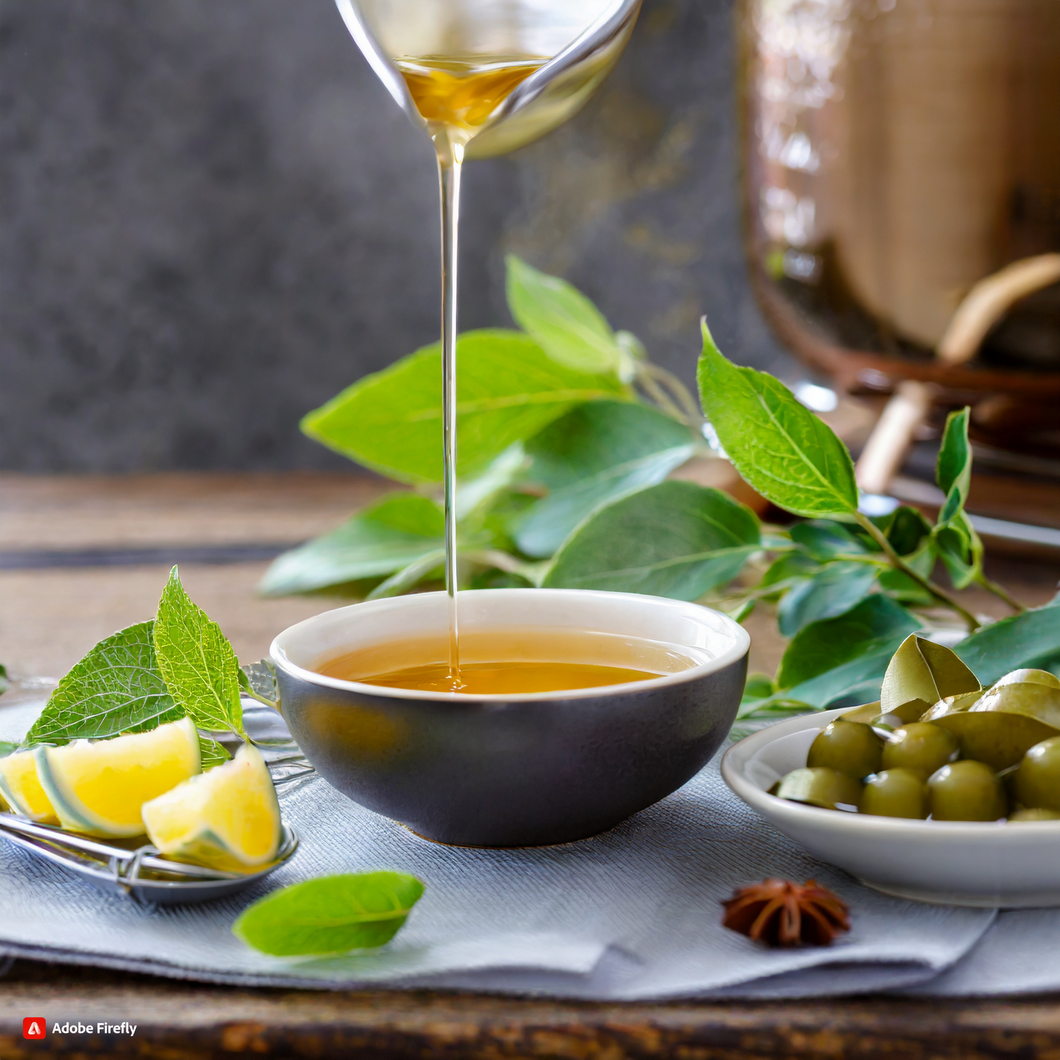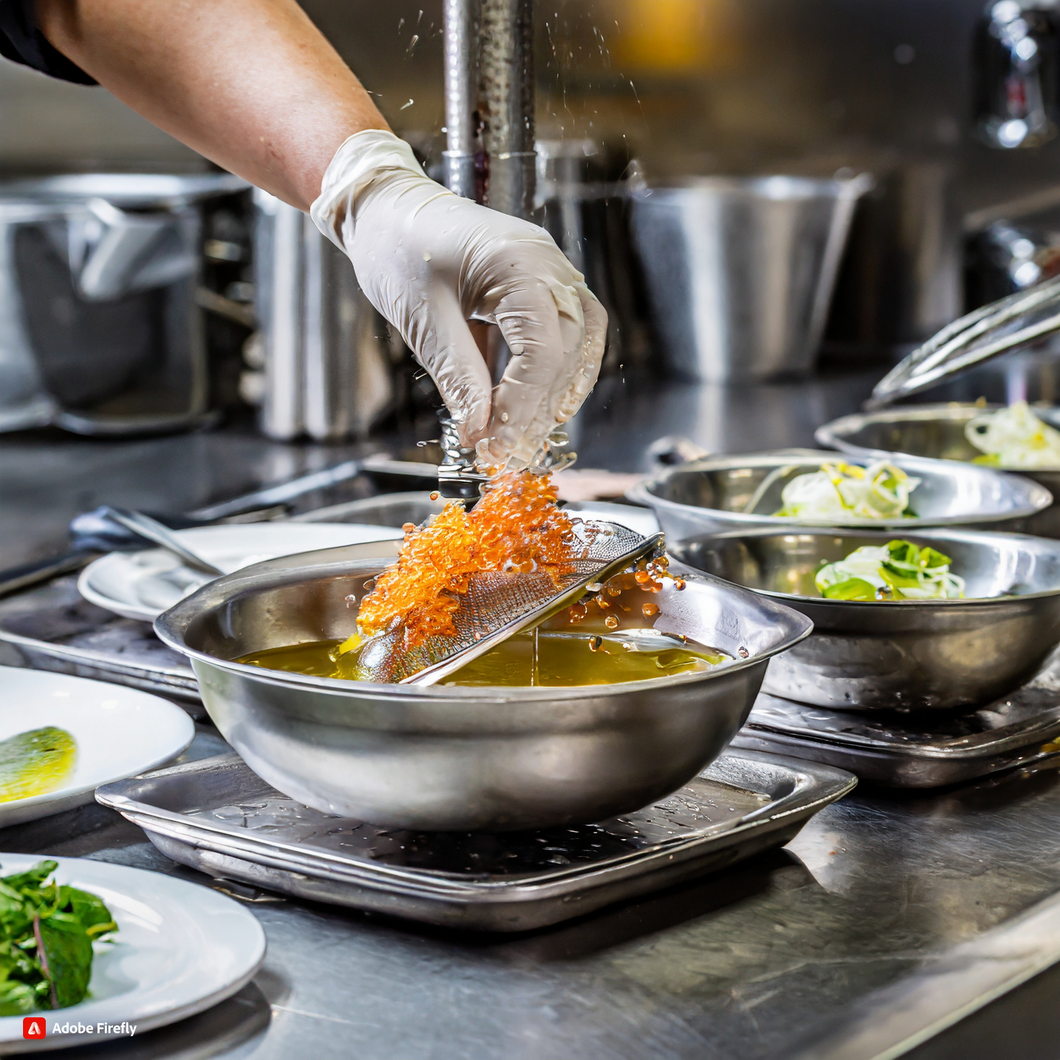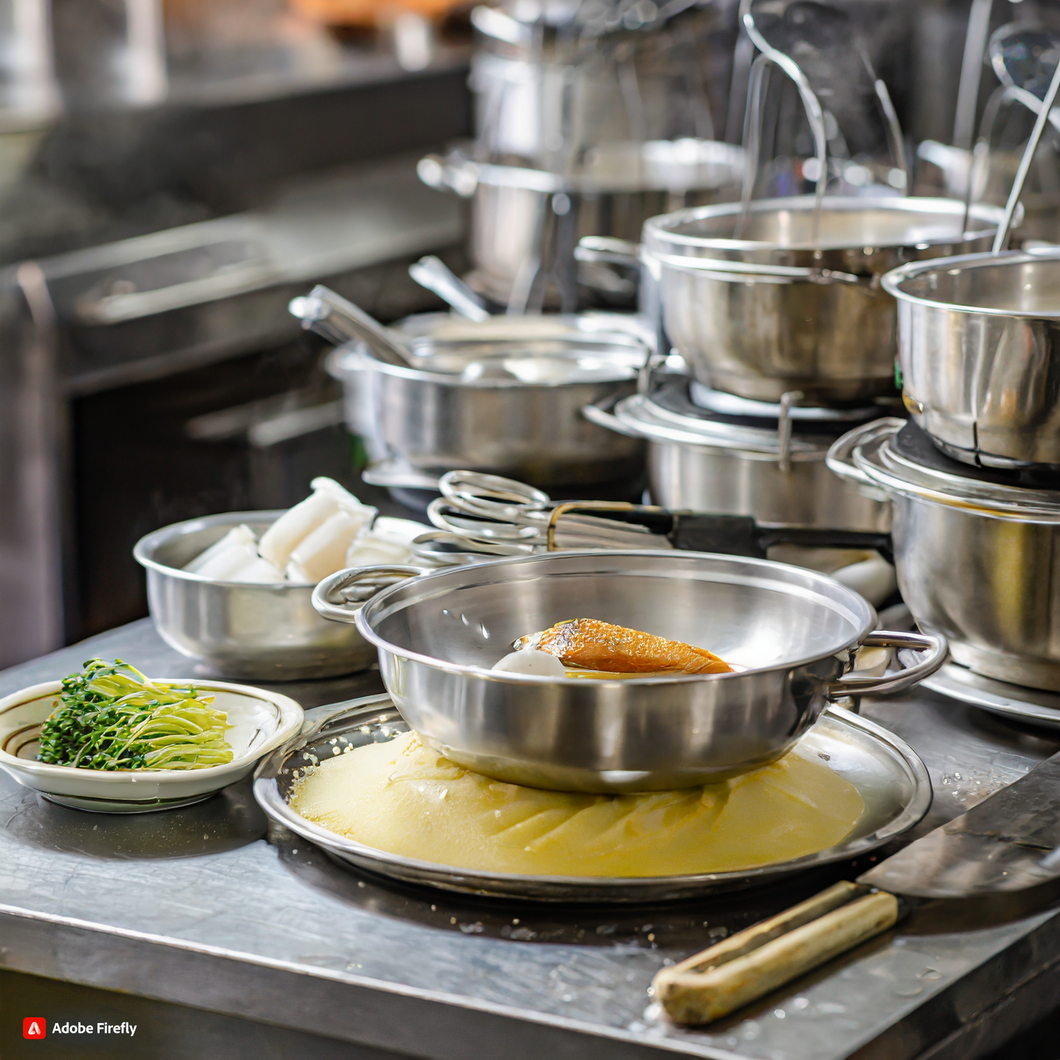Introduction
Enhance Umami in Dishes, Umami is known as the fifth basic taste, alongside sweet, sour, salty, and bitter. It is a savory, meaty, and rich flavor that adds depth and complexity to dishes. Umami is often described as a pleasant and satisfying taste that lingers on the palate. It can be found naturally in foods such as mushrooms, tomatoes, soy sauce, and aged cheeses. However, there are also ways to Enhance Umami in Dishes to elevate their flavor. In this article, we will explore what umami is and how you can enhance it in your dishes to create delicious and satisfying meals.
5 Simple Ways to Boost Umami Flavor in Your Cooking

Umami, the fifth taste, is often described as a savory, meaty, or brothy flavor. It is a Japanese word that translates to “pleasant savory taste” and was first identified by a Japanese chemist, Kikunae Ikeda, in 1908. While sweet, sour, salty, and bitter are the four basic tastes that our taste buds can detect, umami adds depth and complexity to dishes, making them more satisfying and delicious. In this article, we will explore what umami is and how you can enhance it in your dishes with five simple ways.
1. Use Umami-Rich Ingredients
The key to boosting umami flavor in your cooking is to use ingredients that are naturally rich in umami. These include foods such as mushrooms, tomatoes, soy sauce, miso paste, Parmesan cheese, and fish sauce. These ingredients contain high levels of glutamate, an amino acid that is responsible for the umami taste. Incorporating these ingredients into your dishes will instantly add a depth of flavor and enhance the overall taste.
2. Cook with Fermented Foods
Fermented foods are not only beneficial for gut health, but they also add a punch of umami flavor to dishes. Fermentation is a process that breaks down proteins into amino acids, including glutamate, which is responsible for the umami taste. Foods like kimchi, sauerkraut, and fermented soybean paste (also known as doenjang) are excellent sources of umami and can be used in various dishes, from stir-fries to soups.
3. Experiment with Dried and Aged Ingredients
Drying and aging ingredients is another way to intensify their umami flavor. Dried mushrooms, such as shiitake or porcini, have a concentrated umami taste and can be used in soups, stews, and sauces. Aged cheeses, like Parmigiano-Reggiano or aged cheddar, also have a higher level of umami due to the breakdown of proteins during the aging process. Adding a sprinkle of grated aged cheese on top of your dishes can elevate the umami flavor.
4. Incorporate Seaweed into Your Cooking
Seaweed is a staple in Japanese cuisine and is known for its umami-rich flavor. It is a great source of glutamate and can be used in various forms, such as dried seaweed flakes, nori sheets, or kombu (kelp) for making broth. Adding a small amount of seaweed to your dishes can enhance the umami taste without overpowering other flavors.
5. Don’t Forget the Cooking Techniques
Aside from using umami-rich ingredients, the way you cook your food can also affect its umami flavor. Slow cooking, braising, and roasting are all techniques that can help develop and intensify the umami taste in dishes. Slow cooking, in particular, allows the flavors to meld together, resulting in a rich and savory dish. Braising, which involves cooking food in a small amount of liquid over low heat, also helps to enhance the umami flavor by breaking down proteins and releasing more glutamate. Roasting, on the other hand, caramelizes the natural sugars in food, creating a depth of flavor that enhances the umami taste.
In conclusion, umami is a taste that adds depth and complexity to dishes, making them more satisfying and delicious. By incorporating umami-rich ingredients, cooking with fermented foods, experimenting with dried and aged ingredients, incorporating seaweed, and using specific cooking techniques, you can easily boost the umami flavor in your cooking. So go ahead and try these simple ways to enhance umami in your dishes and take your cooking to the next level!
Exploring the Fifth Taste: A Beginner’s Guide to Umami
Have you ever tasted something that made your taste buds dance with delight, but you couldn’t quite put your finger on what made it so delicious? Chances are, you were experiencing the fifth taste – umami. While most of us are familiar with the four basic tastes – sweet, sour, salty, and bitter – umami is a relatively new concept in the Western world. In this article, we’ll explore what umami is and how you can enhance it in your dishes to take your cooking to the next level.

So, what exactly is umami? The term umami comes from the Japanese word for “delicious” and was first identified by Japanese scientist Kikunae Ikeda in 1908. It is often described as a savory or meaty taste, but it’s much more complex than that. Umami is a taste sensation that is caused by the presence of glutamate, an amino acid found in many foods. It is also enhanced by the presence of inosinate and guanylate, two other compounds found in certain foods.
Umami is not just a taste, but it also plays a crucial role in our perception of flavor. It can enhance the other four basic tastes and create a more well-rounded and satisfying eating experience. This is why many chefs and food enthusiasts are constantly seeking ways to enhance umami in their dishes.
So, how can you enhance umami in your cooking? The key is to understand which foods are naturally high in umami and how to use them in your dishes. Some of the most common umami-rich foods include tomatoes, mushrooms, soy sauce, Parmesan cheese, and seaweed. These ingredients are often used in dishes from different cuisines, such as Italian, Japanese, and Chinese, which explains why these cuisines are known for their flavorful and delicious dishes.
One simple way to enhance umami in your dishes is by using umami-rich ingredients as a base for your sauces, soups, and stews. For example, instead of using plain water or broth, try using a combination of chicken broth and soy sauce to make a flavorful base for your next soup. You can also add a dash of fish sauce or Worcestershire sauce to your marinades or dressings to give them a boost of umami.
Another way to enhance umami is by using cooking techniques that bring out the natural umami in foods. For example, roasting or grilling vegetables can intensify their umami flavor. You can also try caramelizing onions or mushrooms to bring out their natural sweetness and umami. Fermenting foods, such as kimchi or sauerkraut, can also increase their umami content.
In addition to using umami-rich ingredients and cooking techniques, there are also some umami-enhancing ingredients that you may not have thought of. For example, adding a small amount of MSG (monosodium glutamate) to your dishes can enhance the umami flavor. MSG is a controversial ingredient, but it is a naturally occurring compound found in many foods, including tomatoes, mushrooms, and Parmesan cheese. It is also used in small amounts in many processed foods to enhance their flavor.
Lastly, don’t forget about the power of seasoning. Salt is not only a flavor enhancer but also a key ingredient in enhancing umami. However, instead of just adding more salt to your dishes, try using other seasonings that are high in umami, such as miso paste, anchovy paste, or dried shiitake mushrooms.
In conclusion, umami is a taste sensation that adds depth and complexity to our food. By understanding which foods are naturally high in umami and how to use them in our cooking, we can take our dishes to the next level. So, next time you’re in the kitchen, don’t forget to explore the fifth taste and see how you can enhance it in your dishes. Your taste buds will thank you.
Secret Ingredients for Elevating Umami in Your Favorite Dishes
Umami, the fifth taste, is often described as a savory, meaty, or brothy flavor. It is a Japanese word that translates to “pleasant savory taste” and was first identified by a Japanese chemist, Kikunae Ikeda, in 1908. While sweet, sour, salty, and bitter are the four basic tastes that our taste buds can detect, umami adds depth and complexity to our food. It is the secret ingredient that can elevate any dish to the next level. In this article, we will explore what umami is and how you can enhance it in your favorite dishes.
Umami is often associated with foods like meat, mushrooms, and soy sauce. However, it is not limited to these ingredients. In fact, umami can be found in a wide range of foods, including vegetables, dairy products, and even fruits. So, what exactly is umami and how does it work?

Umami is the taste of glutamate, an amino acid that is naturally present in many foods. When glutamate is broken down during cooking or digestion, it produces the savory taste that we know as umami. This taste is enhanced by other compounds such as inosinate and guanylate, which are found in foods like fish, meat, and mushrooms. These compounds work together to create a rich, savory flavor that can make your taste buds dance with joy.
Now that we know what umami is, let’s explore how we can enhance it in our dishes. The key to unlocking the full potential of umami lies in understanding how different ingredients work together to create a symphony of flavors. Here are some secret ingredients that can help elevate umami in your favorite dishes.
Firstly, let’s talk about the power of fermentation. Fermented foods like miso, soy sauce, and kimchi are rich in umami. The fermentation process breaks down proteins into amino acids, including glutamate, which intensifies the umami flavor. Adding a spoonful of miso paste to your soup or using soy sauce as a marinade can instantly enhance the umami in your dish.
Next, let’s not forget about the magic of mushrooms. Mushrooms are a great source of umami, thanks to their high glutamate content. They also contain inosinate and guanylate, which work together to enhance the umami flavor. Adding a variety of mushrooms, such as shiitake, oyster, or porcini, to your dishes can add a depth of flavor and umami boost.
Another secret ingredient for elevating umami is parmesan cheese. This hard, aged cheese is packed with umami and can add a rich, savory flavor to any dish. Grate some parmesan over your pasta, sprinkle it on your pizza, or add it to your risotto for an extra umami kick. Read easy Healthy Lunch for Weight Loss.
Soy sauce, a staple in Asian cuisine, is also a great source of umami. It is made from fermented soybeans and contains high levels of glutamate. A splash of soy sauce in your stir-fry or a drizzle over your roasted vegetables can add a burst of umami to your dish.
Lastly, let’s not forget about the power of slow cooking. Slow cooking allows flavors to develop and intensify, resulting in a rich, savory taste. This is because the long cooking time breaks down proteins and releases more glutamate, resulting in a more pronounced umami flavor. So, next time you make a stew or a pot roast, let it simmer for a few hours to unlock the full potential of umami.
In conclusion, umami is the secret ingredient that can take your dishes from good to great. Understanding how different ingredients work together to enhance umami can help you create flavorful and satisfying meals. So, next time you’re in the kitchen, don’t forget to add a dash of umami to your dishes and watch them come to life. Happy cooking!
Q&A – Enhance Umami in Dishes
Q: What is Umami?
A: Umami is a savory taste that is often described as a “fifth taste” alongside sweet, sour, salty, and bitter. It is commonly found in foods such as meat, mushrooms, and aged cheeses.
Q: How can I enhance Umami in my dishes?
A: There are several ways to enhance Umami in your dishes. Some common methods include using ingredients such as soy sauce, fish sauce, or miso paste, as well as incorporating umami-rich foods like tomatoes, mushrooms, or Parmesan cheese into your recipes.
Q: Are there any natural sources of Umami?
A: Yes, there are many natural sources of Umami, including meats, seafood, mushrooms, tomatoes, soy sauce, and aged cheeses. Some vegetables, such as asparagus and green peas, also contain Umami.
Conclusion for Enhance Umami in Dishes
In conclusion, umami is the fifth basic taste that is often described as savory or meaty. It can be enhanced in dishes by using ingredients such as soy sauce, mushrooms, tomatoes, and Parmesan cheese. Additionally, cooking techniques like slow roasting and fermentation can also bring out the umami flavor. Experimenting with different umami-rich ingredients and cooking methods can help elevate the taste of your dishes and make them more satisfying and flavorful.
Please follow us on linkedin. You can learn all best canadian food recipes you can check our Culinary 1TouchFood Youtube and Telegram 1TouchFood page. Don’t forget Fighting Obesity Magazine and Radio Cooking.

